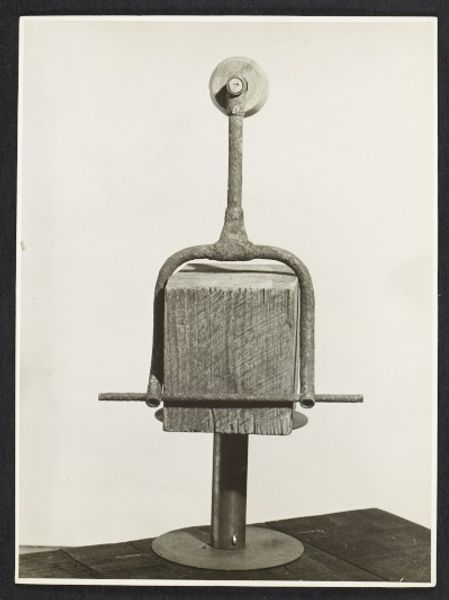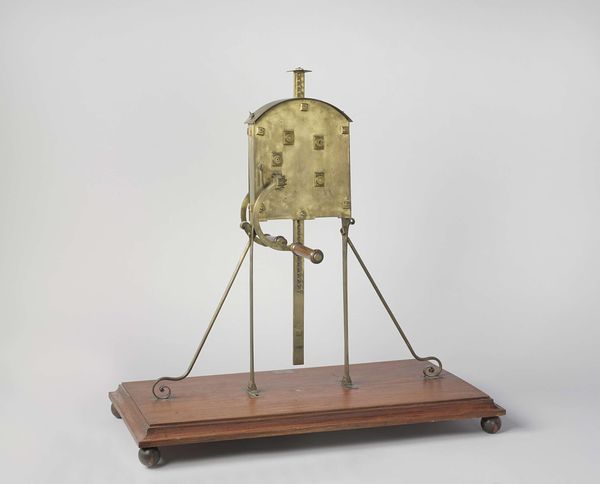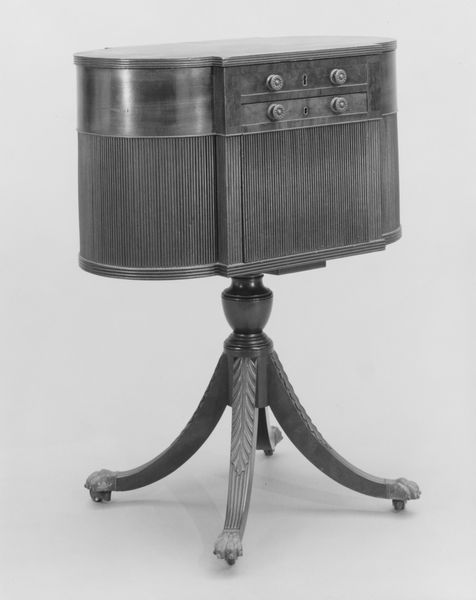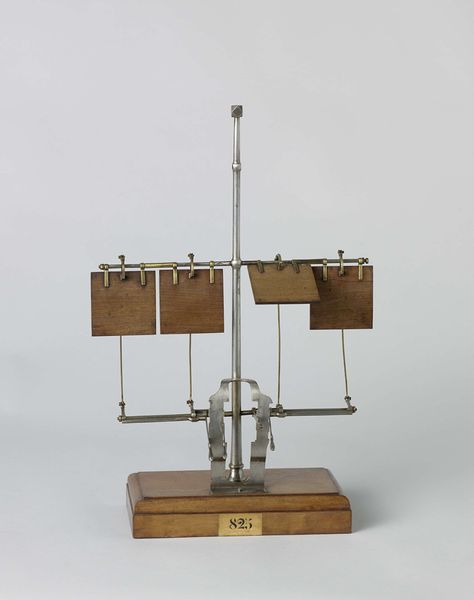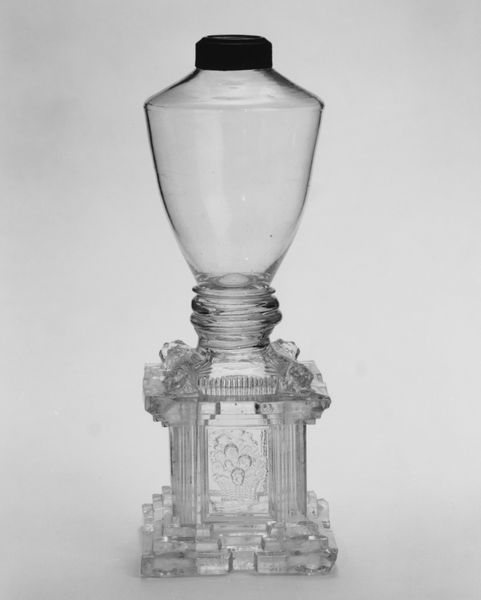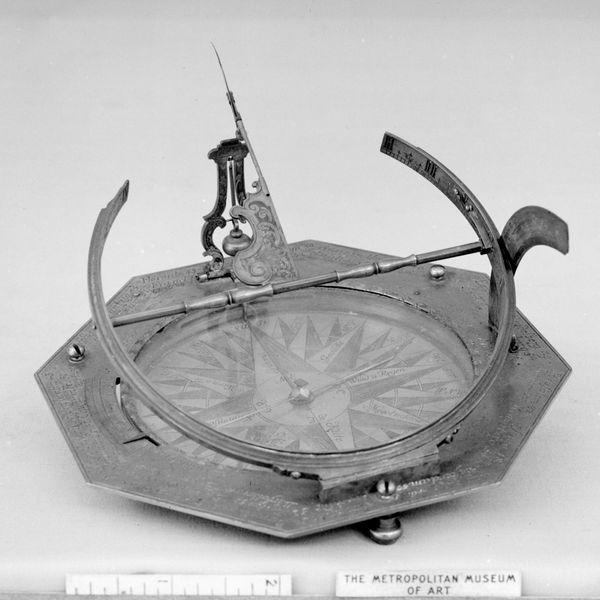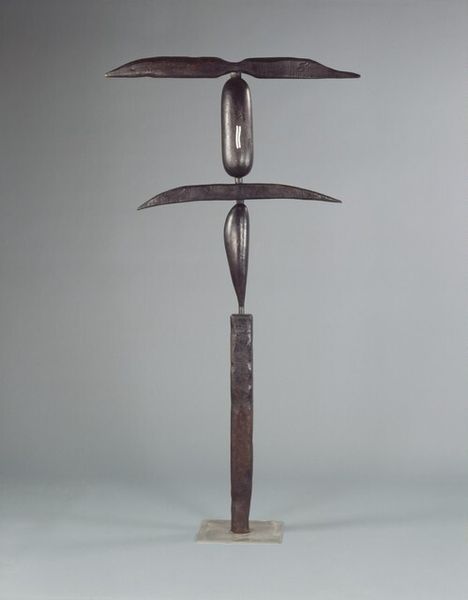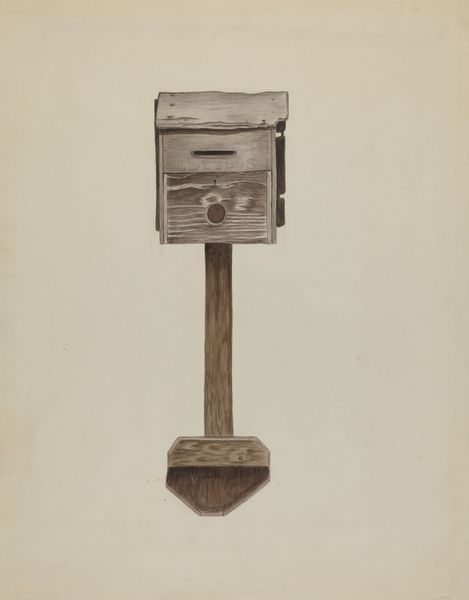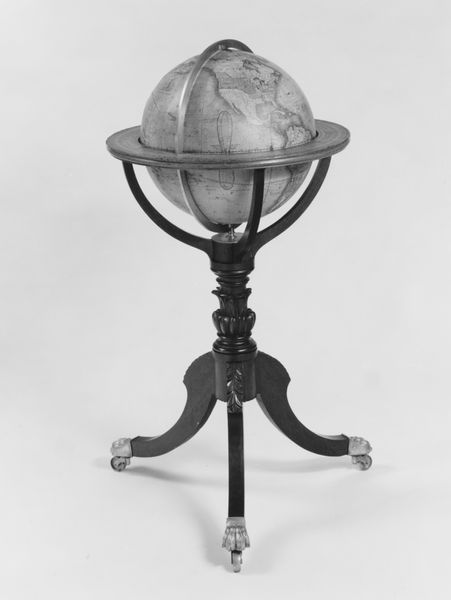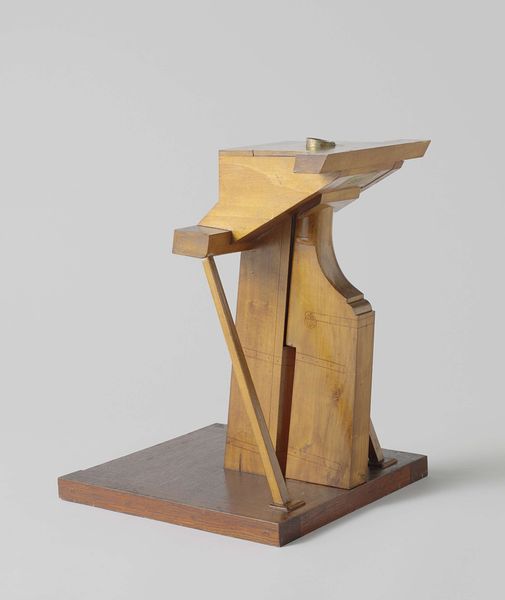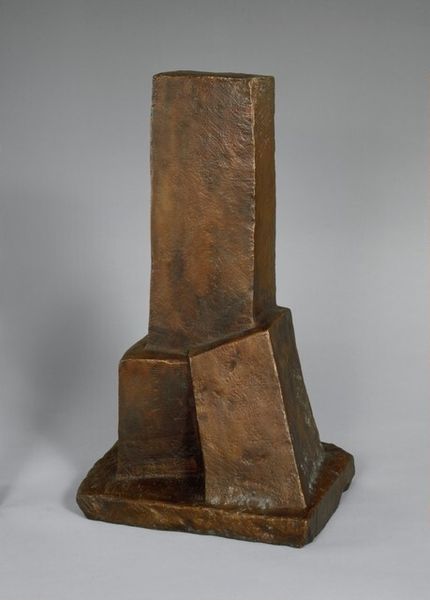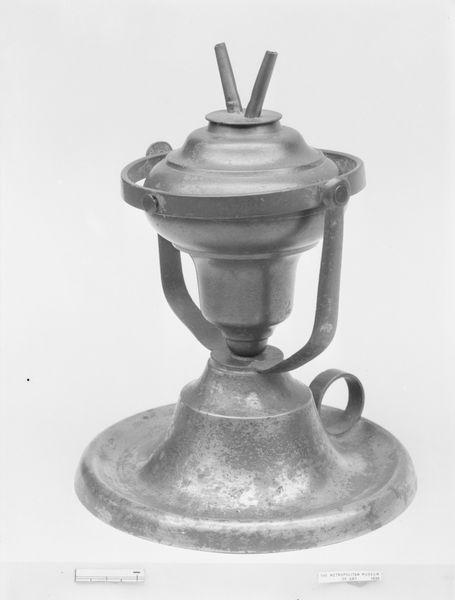
sculpture, wood
#
neoclacissism
#
sculpture
#
sculpting
#
geometric
#
sculpture
#
wood
#
decorative-art
#
miniature
Dimensions: Overall: 7 1/8 × 4 3/4 × 3 5/8 in. (18.1 × 12.1 × 9.2 cm)
Copyright: Public Domain
Editor: This charming piece is called "Portable Cube Sundial," dating from 1800 to 1815, and its attributed to E.C. Stockert. Carved from wood, its miniature form is truly eye-catching. The cube with its gnomons is rather playful; I wonder how its imagery reflected its user’s life? What do you see in this piece? Curator: This object beautifully embodies Neoclassical sensibilities, a yearning for order and reason. Sundials, in themselves, carry potent symbolism—they’re constant reminders of mortality, the fleeting nature of time. Consider how the cube form interacts with that idea. Editor: So, the stable geometric shape against something ephemeral? Curator: Precisely! Notice how the engraved lines mimic classical architecture, yet the wood gives it a homely quality. Even in miniature, these objects asserted power: think of time as a colonial imposition upon landscape. Did the owners think of its inherent cultural meanings while they carried them around? It asks more questions than it answers. Editor: The more you describe it, the more it is contradictory. A tiny sculpture trying to grapple with these giant issues. Curator: Absolutely, this object condenses grand concepts into a palm-sized puzzle, leaving one to reflect how time, culture, and memory are interwoven. Editor: Thanks! I'll certainly think twice the next time I glance at the clock!
Comments
No comments
Be the first to comment and join the conversation on the ultimate creative platform.
